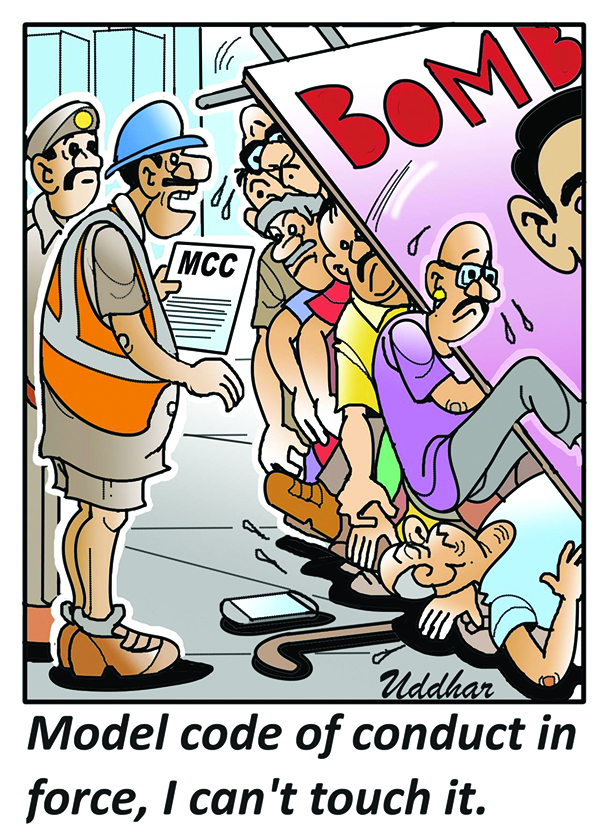18 Mar 2018 | 05:23am IST
Hospitals inflated drug prices by up to 1,737%: govt regulator. 8 days later, he’s transferred
Swagata Yadavar
On March 1, 2018, Bhupendra Singh, the head of the National Pharmaceutical Pricing Authority (NPPA) with a year of his tenure left, was transferred to the National Authority for Chemical Weapons Convention, sparking protests from pro-access activists. They alleged that an “industry and hospital lobby”–mainly large multinational pharmaceutical companies and corporate hospitals–was behind the transfer.
The NPPA is the government agency responsible for setting prices of drugs and ensuring drug availability. Singh had been at its helm since 2016, and under his watch, the prices of cardiac stents were slashed by upto 80% last year.
A week ago, the NPPA published an analysis showing how private hospitals buy medicines and medical devices cheaper in bulk and sell them on to patients much above the maximum retail price, earning margins of up to 1,737%.
The NPPA analysed the bills charged by four “reputed private hospitals” after relatives of deceased patients complained of overcharging. Patients’ families had protested that final bills were three times the initial estimates, the NPPA noted.
It found that the largest component of the bills were drugs, devices and diagnostics (56%), larger than the cost of procedures and room rent (23%), which are the “more visible components”. The prices of medicines and diagnostics were not part of the publicity packages marketed among patients before admission.
The analysis is significant because 58% of households in rural areas and 68% in urban areas choose private hospitals for in-patient care, according to the ‘Health in India’ report from the 71st round of the National Sample Survey.
As many as 15% of poorer households sold assets or took costly loans to pay for hospitalisation, as IndiaSpend reported in July 2017. The average cost of hospitalisation in a private hospital (Rs 20,098) was twice as much as in a public hospital (Rs 9,152).
As many as 52.5 million Indians were pushed into poverty due to healthcare costs in a single year (2011), FactChecker reported in December 2017.
Rs 16 lakh for 15 days of hospitalisation The NPPA conducted its analysis after Gurgaon’s Fortis Healthcare charged the family of seven-year-old Adya Singh, a dengue patient, Rs 16 lakh ($24,576) for a 15-day stay and treatment. The hospital had allegedly billed the family for 616 syringes and 1,500 non-sterile gloves, as the Economic Times reported on November 25, 2017.
Singh and the other three patients whose bills were investigated had died during treatment. Their families had been charged a total of Rs 69 lakh ($105,984)–an average of more than Rs 17 lakh ($26,112) each. The median per capita income in India was $616 in 2013, a Business Standard report based on a Gallup poll said in December 2013.
Non-essential drugs prescribed for “higher margins” In all cases, the cost of ‘scheduled’ medicines–essential medicines under price control–was only 4.1% of the total bill, as against ‘non-scheduled formulations’ that constituted 25.6% of the total bill.
“It is amply clear that for claiming higher margins, doctors-hospitals preferred prescribing non-scheduled branded medicines instead of scheduled medicines,” the NPPA said. It explained that manufacturers often launch variants of scheduled drugs as “new drugs” or “fixed drug combinations” so as to escape price control, thereby diluting the purpose of creating a National List of Essential Medicines.
The agency found that despite buying medicines in bulk at cheaper prices, hospitals forced pharmaceutical companies to print higher prices to earn “high profit margins” resulting in “huge out of pocket expenditure” for patients.
Diagnostics, device prices also hiked Hospitals also hiked prices of diagnostic services and devices, which do not fall under the NPPA’s purview. Diagnostic services accounted for 15% of the total bill, but NPPA found that the hospitals charged higher prices for these than other independently-run private centres.
In three of the cases, profit margins for “non-scheduled devices”–syringes, catheters and cannulas–were “exorbitant and clearly a case of unethical profiteering in a failed market system”, the NPPA noted.
The benefits accrued to the hospitals and not manufacturers, the NPPA noted.
For example, a three-way stop cock–used in intravenous lines–was priced at Rs 5.77 to the hospital but charged at Rs 106 to patients, a 1,737% increase. Similarly, in scheduled drugs, Verfen–prescribed for pain relief after surgery–was purchased by the hospital at Rs 56.44 but was charged at Rs 220 to patients, an increase of 290%.
“The violation of ceiling price and corresponding MRPs is detected only in very few cases which shall be pursued further by NPPA for recovering the overcharging amounts from defaulters,” the NPPA concluded.
(Yadavar is a principal correspondent with IndiaSpend.)
